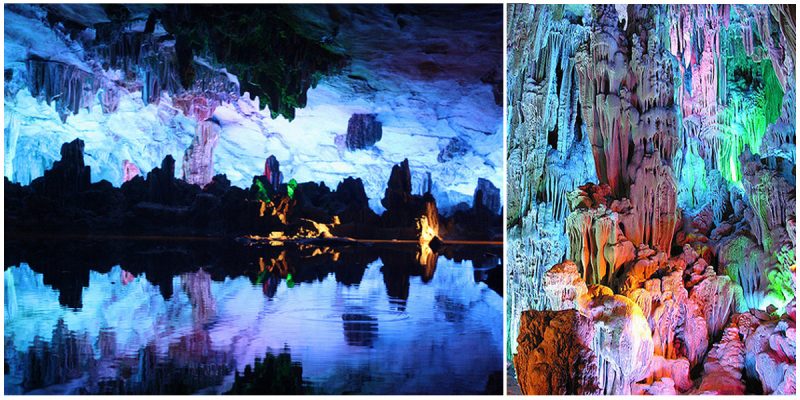The Reed Flute Cave is a landmark and tourist attraction in Guilin, China. The cave got its name from the type of reed growing inside, which can be made into melodious flutes.
It is a natural limestone cave with multicolored lighting, and has been one of Guilin’s most fascinating attractions for over 1200 years, now being over 180 million years old.
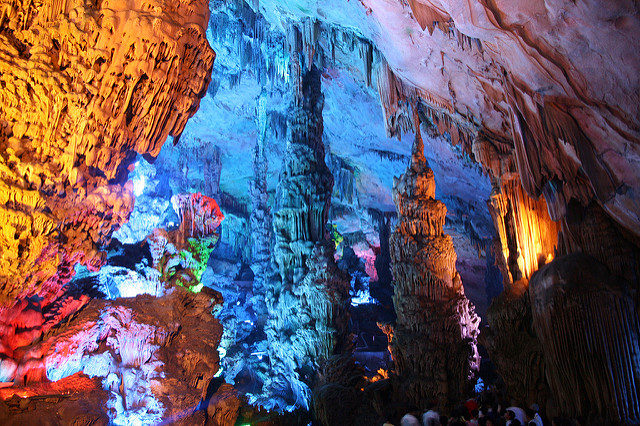
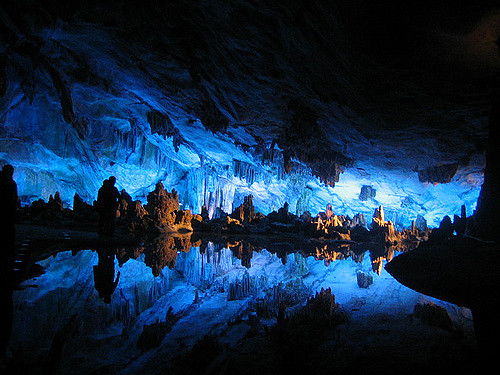
The 240-meter-long cave is a fascinating gallery of natural sculptures. It is filled with a large number of stalagmites, and rock formations in weird and wonderful shapes.
Some are human-like figures, some resemble animals, some look like fruits and vegetables, and some look like flowers.
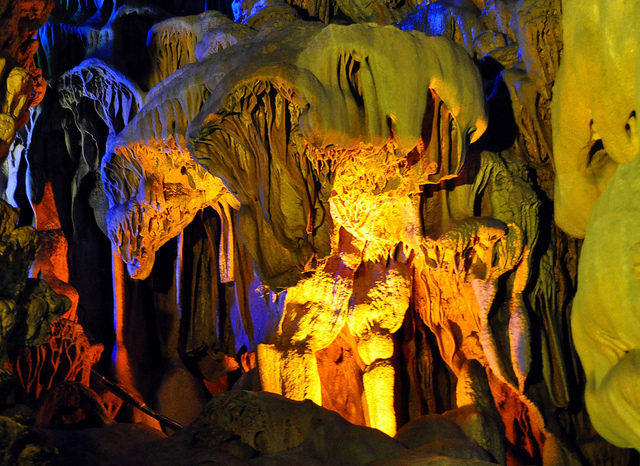
The most popular formations are Rose Dawn over Lion Peaks and Crystal Palace. The grotto, which is called the Crystal Palace, served as an air-raid shelter during the Second World War.
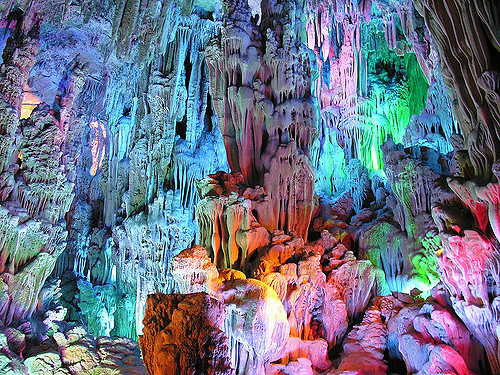
The cave is reputed as “The Palace of the Natural Arts”. Tourists began to visit here in the Tang Dynasty. There are 77 stone inscriptions covering many years of history, including travelogues and poems written by Tang Dynasty literati who visited the cave.
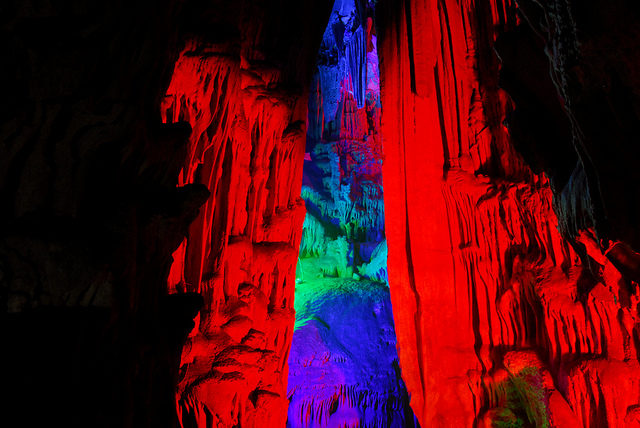
According to geological research, the cave used to be an underground lake.
Gradually the lake turned into the cave as a result of the enhancement of the mountain and decline of the water level.
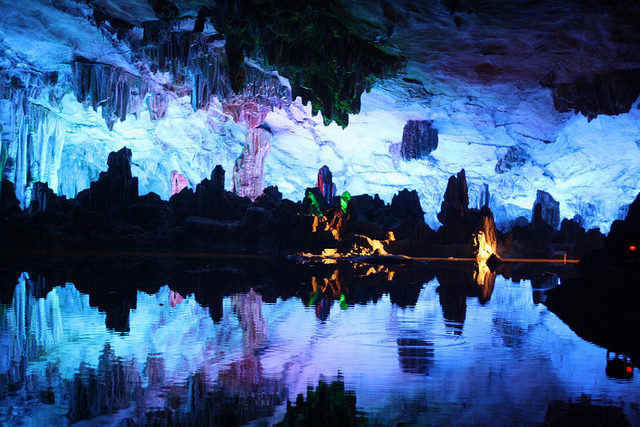
The cave was almost forgotten for a thousand years before it was rediscovered in the 1940s by a group of refugees fleeing the Japanese troops. It was opened to the public in 1962 and is now equipped with an artificial lighting system to emphasize a visual effect.
The effect is almost surreal, as the light turns the otherwise dark space into a strange mix of bright neon colors and rough natural erratic.
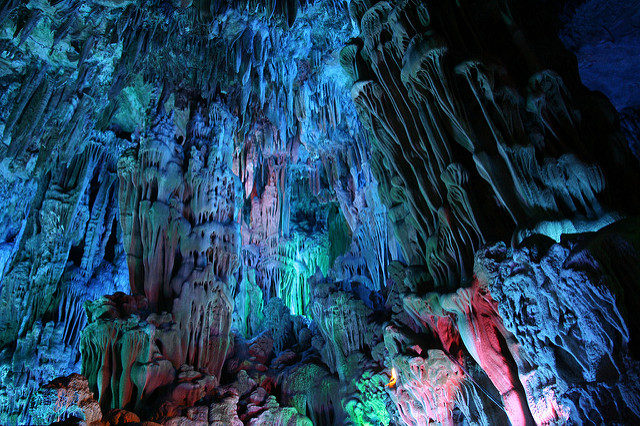
Rich with stalagmites and stalactites, colorful displays and grand natural architecture, the Reed Flute Cave is a library of treasures and enjoyment.
